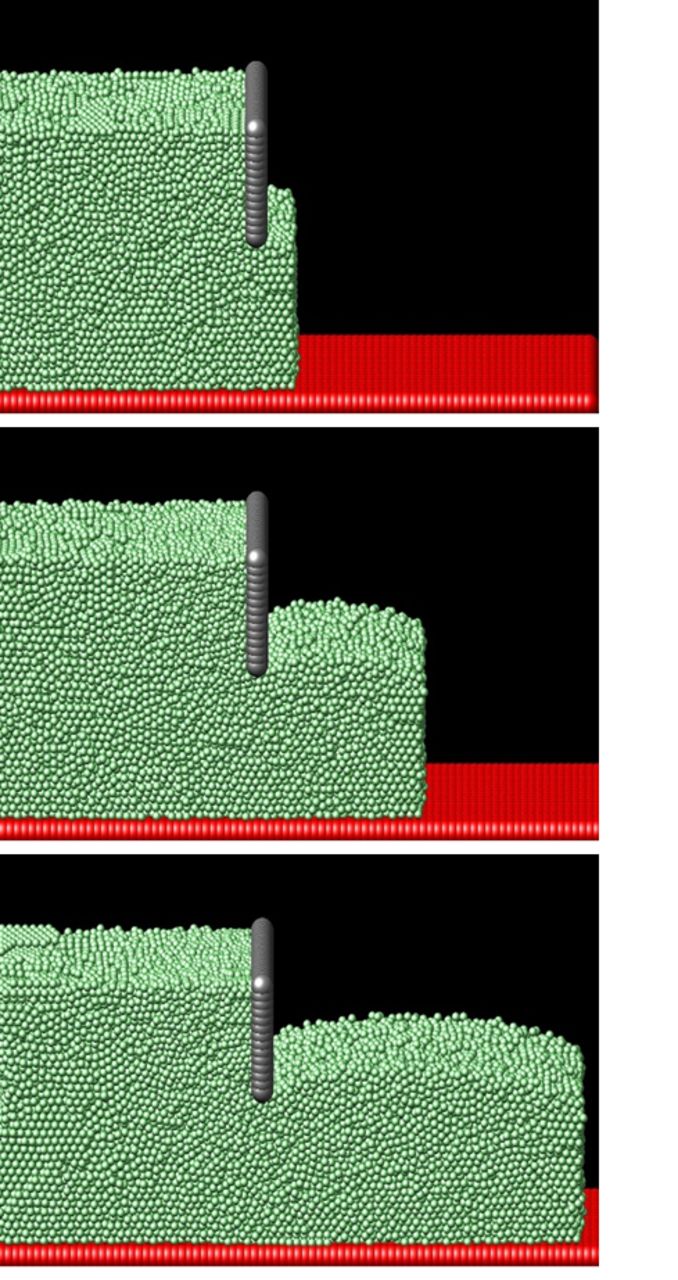Abstract
The microstructure of commercially made lithium-ion battery electrodes is not necessarily optimal for cell performance. In an attempt to optimize the performance, detailed understanding of the microstructure is necessary. Factors that influence electrode microstructure include high-level variables such as composition and porosity; as well as detailed fabrication conditions that are part of the film-making, drying, and calendering steps.
Here we report on continuing efforts to model the particle-level microstructure of porous electrodes and how this relates to fabrication conditions [1]. LAMMPS, a molecular simulation code, was adapted for these mesoscale particle simulations. In particular we simulate an NCM lithium-ion cathode using a superposition of spheres to imitate active particles, carbon, binder, and solvent. Equations of motion coupled to inter-particle forces are solved to simulate particle motion and subsequent immobilization during fabrication steps.
Our model is uniquely able to capture the essential physics in both the slurry and dried film. Model results are validated by comparing to experimental results for microstructure, tortuosity, and mechanical properties like viscosity and elasticity. Such simulations are a first step in allowing us to predict electrode microstructure and therefore battery performance from fundamental fabrication conditions. This contributes to the long-term goal of this work, namely to increase the performance of electrodes by improved control of the manufacturing process.
This work was supported by the U.S. Department of Energy through the BMR program.
References:
[1] M. Forouzan et al., J. Power Sources 312, 172-183 (2016).
Figure 1:
Sequence of images (top to bottom) showing simulated electrode coating process with slurry film (green) moving relative to blade (gray) at shear rate 250 s-1.

Figure 1

